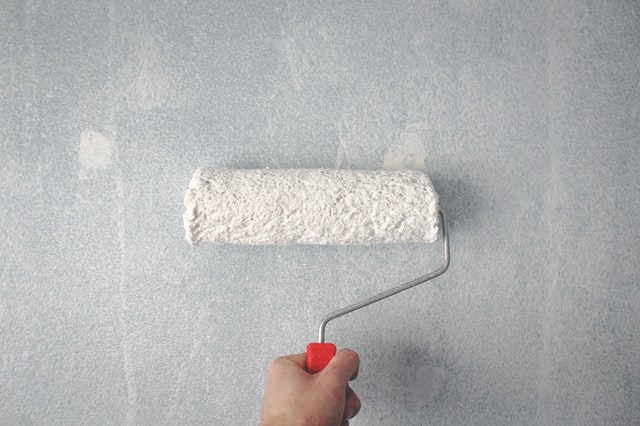3 Things You Should Consider When Repainting Your Walls

Many of us have been spending quite a bit of time at home. If you’re tired of the color of your walls, a Repainting fresh coat of paint may be in order! The steps below can make the whole process both simpler and much more satisfying.
Clean and Prepare
You’ll need to take everything off the walls to paint; this much is obvious. While you’re taking everything down, take the time to dust off the artwork and any knick-knacks. Move furniture away from the walls and settle your artwork, face-down, on top of softer or upholstered items. Once you have everything cleaned up and off the walls, cover it with plastic if you’re painting the ceiling or a canvas drop cloth if you’re just painting the walls.
Once everything is down, brush and wash the walls with a mixture of white vinegar and water, mixed one to one. Use large yellow sponges to lightly sponge the vinegar and water combination onto the walls and rinse the walls with new sponges and freshwater. Vinegar is a terrific degreaser that won’t leave a soapy residue on the walls, which may cause tack. While you’re rinsing, take note of holes and unevenness in the walls so you know exactly where to scrape and patch.
Protect and Patch
Put down a drop cloth along the wall before you start patching. Plastic along the wall can get slippery when it’s wet, and old sheets can get tangled as you walk on them. Canvas will lay flat.
Now that your walls are clean, you need to scrape and patch. Carefully run over the walls with your bare hands to feel the bumps and holes. Scrape around the hole with the edge of a good taping knife, then add a thin layer of spackle or fast-drying sheetrock mud. You will save mess by doing two thin patches instead of one heavy one. A heavy layer of patching material takes longer to dry, will require more sanding, and will be messier in general.
Once your patches are all dry, gently sand them to create a smooth surface. If you have a shop vacuum, vacuum as you sand to draw away the dust before it settles back on the wall or all over your drop cloth.
Prime and Color
All patches will need priming. If your original color was dark or intense, priming the entire wall is a good idea. Priming can be a bit frustrating; it’s very tempting to use cheap brushes and rollers with primer, but a cheap base will result in a rougher top coat. Be ready to burn through good brushes on occasion and decent quality rollers most of the time to get a good quality coat of primer. You may be tempted to buy paint and primer in one. While this may work on walls that didn’t need to be patched, these combinations tend to get a less than consistent result. Priming and painting in two different layers is the best way to get a velvety finish.
Finally, you get to put color on the walls! Choosing color is absolutely one of the most fun things about updating your home. Prep work can be quite frustrating if you really love to decorate; your house will be dusty and messy and not relaxing for quite a time. However, good-quality prep will keep your topcoat looking lovely.
Again, roller covers and, to a lesser extent, brushes need to be treated as a consumable for the best result. When you put color on the wall, be prepared for needing a second coat. To start, put color on the wall in a V or W pattern, then work backward over the pattern to fill in the color. If you’re painting a flat ceiling and the walls in the same color, which is a very good idea if you are painting a really high ceiling, cut in with a brush to fill in the corner and carefully watch for drips below; be ready to roller up any drips.
Freshly painted walls are not a huge investment of money, but doing it right will take time. Get the free paint chips and put them on the wall so you can study them in every light throughout the day. You deserve a color that provides you with restful energy.
Read More : Benefits of Beach Style Wall Art on your Home Walls



